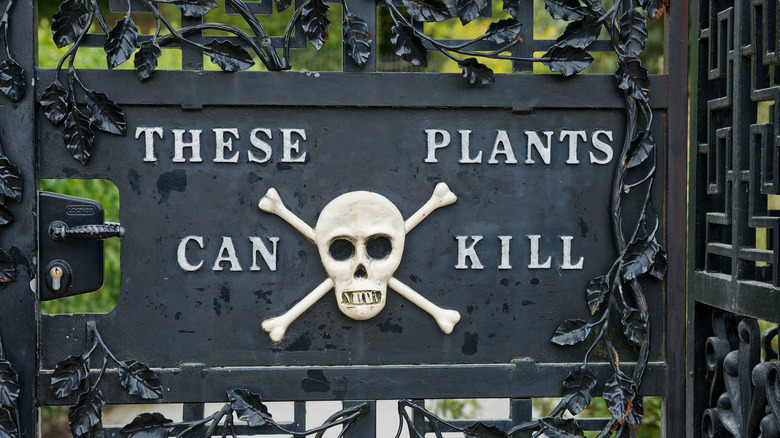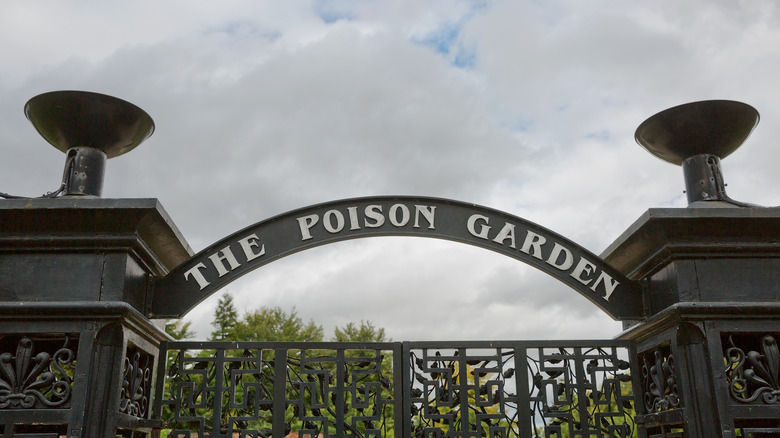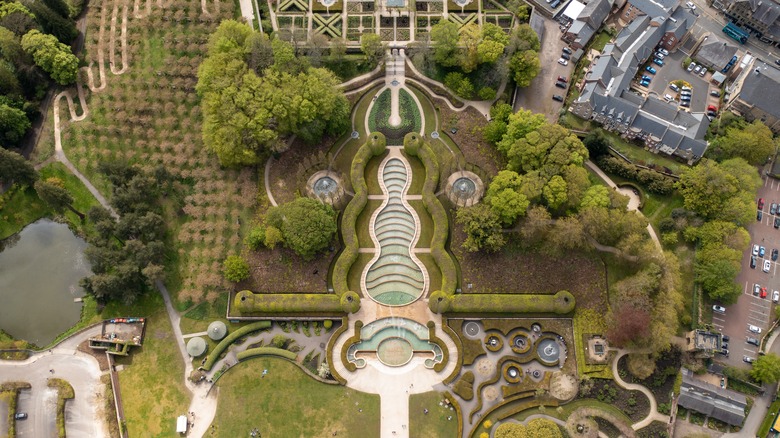The Terrifying Reason This European Garden Is The Most Dangerous In The World
If your taste in travel leans towards the unusual and morbid and you're a fan of bizarre tourist attractions, there's a garden in the United Kingdom calling your name. To the untrained eye, it might appear as though nothing is amiss, as though you are merely meandering through any other beautiful English estate. However, the natural beauty isn't the only intoxicating thing in the strange Alnwick Garden. Each plant in the garden, however harmless it appears, contains the power to sicken — or even kill you.
The dangerous garden is located on the grounds of the historic Alnwick Castle in the county of Northumberland near the Scottish border. The castle itself dates back nearly a thousand years. Before entering the Poison Garden, you'll be greeted by an elaborate gate crafted from black iron. A sign adorned with a skull and crossbones, a universal symbol for poison, reads "These Plants Can Kill." The garden remains constantly behind bars and is only accessible through a guided tour. Only small groups of about 20 people are permitted to enter at a time so that guides can keep a close watch on each and every person. Hundreds of thousands of travelers visit each year to explore the fun and spooky destination and leave with a little more knowledge on poisonous plants and their various uses.
The inspiration behind England's Poison Garden
Alnwick Garden was created under the direction of the Duchess of Northumberland in 2005 as an addition to her ambitious renovations of the existing gardens covering 12 acres around her family's stunning gothic castle. As she was quoted in Garden Design, "I wondered why so many gardens around the world focused on the healing power of plants rather than their ability to kill. I felt that most children I knew would be more interested in hearing how a plant was killed, how long it would take you to die if you ate it, and how gruesome and painful the death might be."
Her words beg the question of whether she has actually known that many children, as the gory details of death by poison might be a little creepy for most little ones. You might not want to consider the Duchess as a potential babysitter, but it's impossible to deny that her vision to create a garden full of poisonous plants is deliciously macabre. Her apparent fascination with death further presents itself in her passion for taxidermy, which you can see for yourself in a small hut located near the gate to the garden.
The Duchess also believed that the inclusion of plants used to formulate narcotics, like opium poppies, coca, magic mushrooms, and marijuana, would discourage children from using drugs. Subsequently, she received special permission to grow them. Today, they're locked up at all times and are under constant surveillance.
The delightfully deadly plants of Alnwick Garden
Visitors to Alnwick Garden are permitted to look but never touch or smell the plants as they wander through the ivy-covered tunnels admiring the flame-shaped garden beds. Tasting them is also strictly prohibited, for obvious reasons. Some plants in the garden are so toxic that even the fumes created from trimming them are dangerous.
There are about a hundred plants throughout the garden, and every single one is toxic. You'll see the infamous Atropa belladonna, commonly known as deadly nightshade, which causes hallucinations, convulsions, coma, and death. There's also hemlock, another popular poisonous plant that was famously used to execute the Greek philosopher Socrates. The most dangerous plants of all, like wolfsbane, are kept behind cages. Throughout the tour, the guides will discuss famous instances of murder with poison.
Many guests are shocked to discover that many of the plants and flowers in the Poison Garden can also be found in their very own gardens at home. Daffodils, periwinkle, and Angel's Trumpet all make an appearance. Some plants can also be used in low doses as medicines. A drug created using periwinkle, for example, has been effective as a cancer treatment. "The line between kill and cure is what I'm interested in," the Duchess told NPR. "The story of how plants can cure, I find pretty boring really. Much better to know how a plant kills." One thing is certain — a visit to her Poison Garden is anything but boring.


